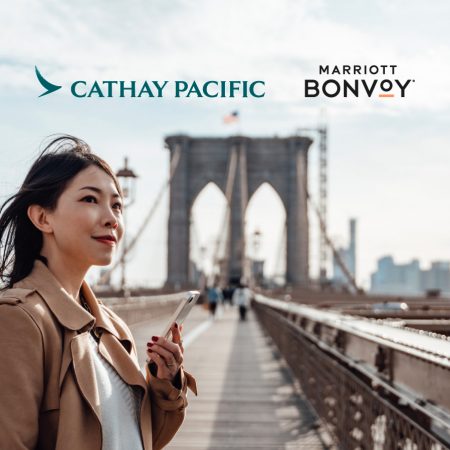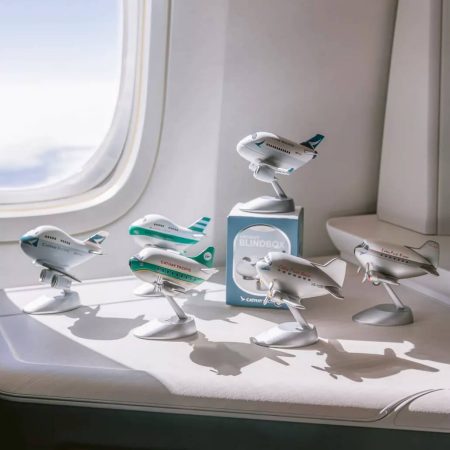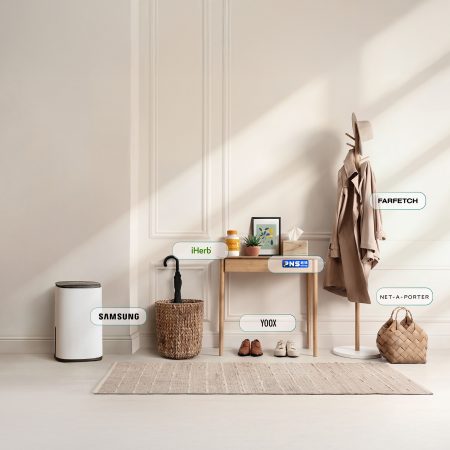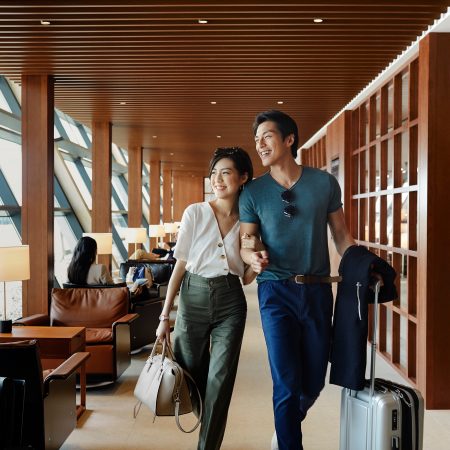Hong Kong markets for every type of shopper
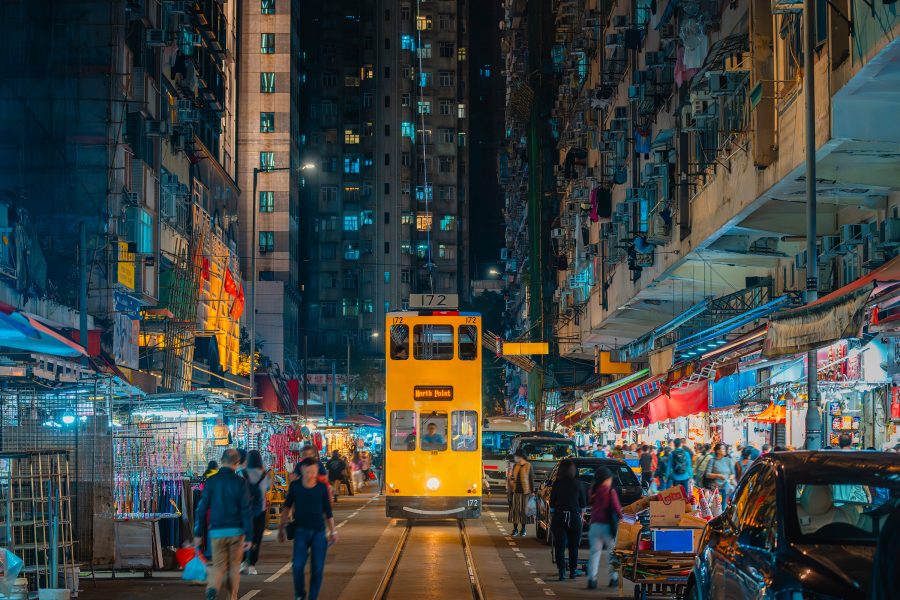
Hong Kong markets have something for every type of shopper, from the bargain-hunter chasing the best deals on fashion and electronics, to the vintage style maven in search of hidden gems.
Shopping in Hong Kong is especially convenient, thanks to the regional tradition that sees businesses offering similar goods and services clustered together. That means if you’re on a shopping mission – say, to find a pair of limited-edition sneakers or a pet goldfish to boost your fortune – chances are you’ll find a wealth of options lined up on the same street.
And of course, no market shopping experience in Hong Kong is complete without a bit of bargaining – it’s part of the thrill. Shopkeepers often start with prices that are well above what they are willing to accept. Don’t be afraid to haggle – and if the deal isn’t right, a little theatrics, like pretending to walk away, can work wonders. More often than not, you’ll land on a price that satisfies both sides.

Credit: Cheryl Chan/Getty Images
Apliu Street
Best for: cheap electronics
From iPhones to vintage Casio watches, Apliu Street is one of the best places to find electronics at wallet-friendly prices. But that's not all that the bazaar is known for: this is also where shoppers go on the hunt for fabrics and toys, or to dig through random assortments of trinkets from flea market stalls. It’s located in the historic neighbourhood of Sham Shui Po, which has been undergoing a creative renaissance in recent years, with hipster cafés and galleries opening up.
Apliu Street, Sham Shui Po, Kowloon. Closest MTR station: Sham Shui Po
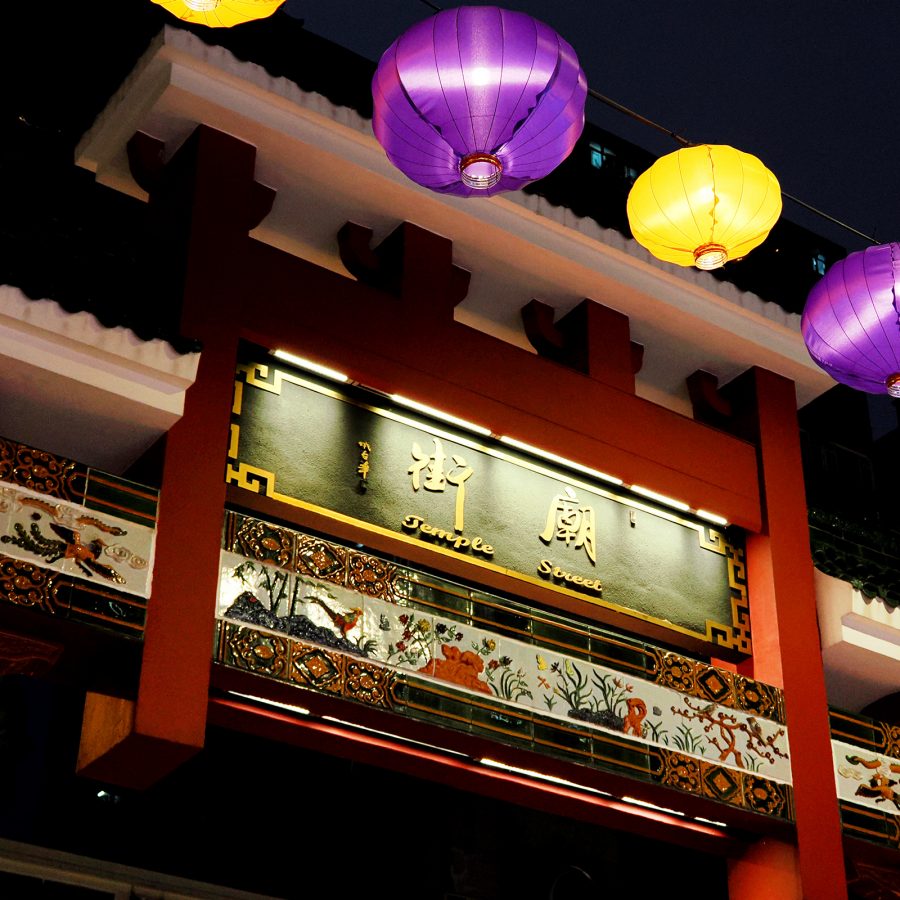
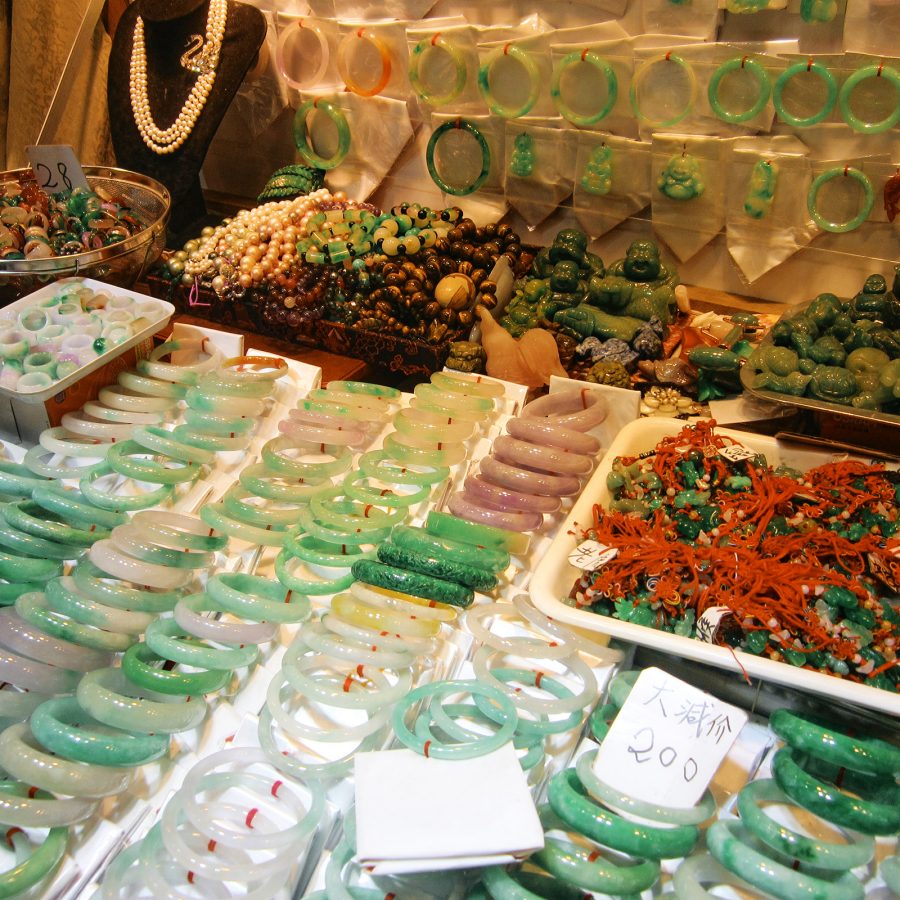
Credit: Angel Santana/Getty Images
Temple Street Night Market
Best for: antiques and trinkets
Perhaps Hong Kong’s most iconic outdoor shopping destination, Temple Street Night Market stretches from Jordan to Yau Ma Tei, with a medley of stalls lining both sides of the street every evening, from 5pm to 11pm. Whet your appetite with classic Hong Kong street food or seek out authentic dai pai dong dishes at Woosung Street Cooked Food Market. Browse antiques, watches, jewellery, toys, clothes and an eclectic mix of goods. Then, visit traditional fortune tellers, set up inside tented booths, and have your palm or face read – all while Cantonese opera singers and karaoke hopefuls turn up with lively street performances. For shoppers seeking precious gems, jade can be found here or at the Jade Market, which is about a five-minute walk away.
Temple Street, Jordan, Kowloon. Closest MTR station: Yau Ma Tei or Jordan
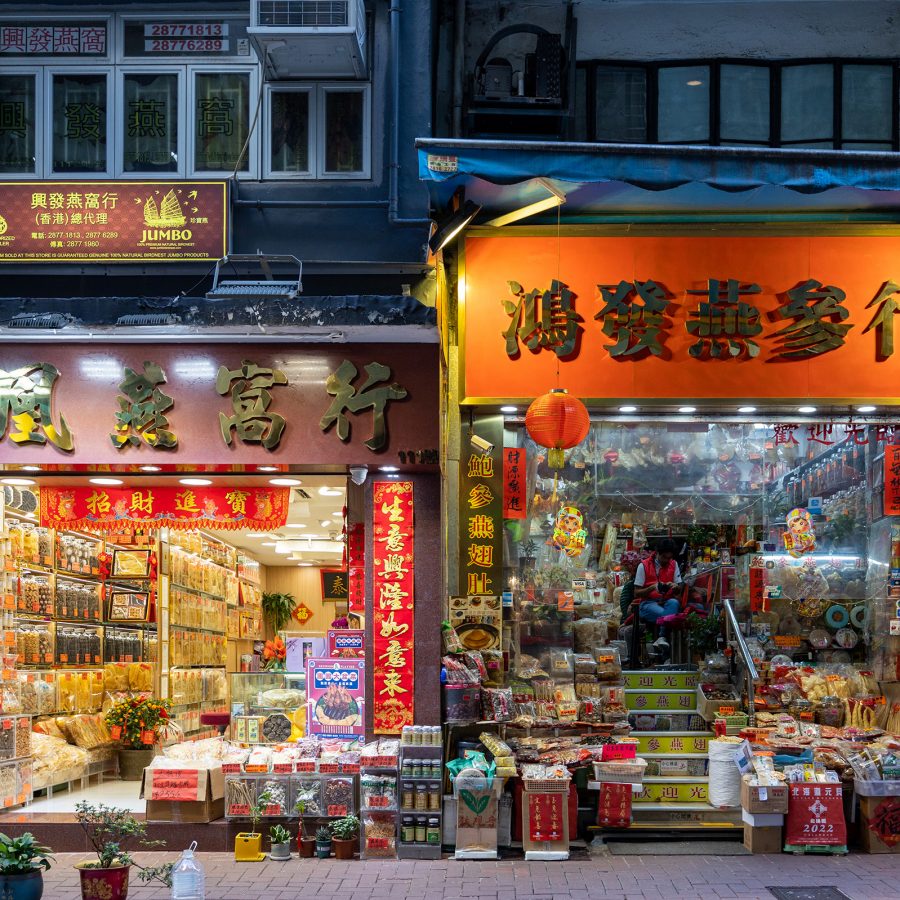
Credit: winhorse/Getty Images
Dried Seafood Street
Best for: traditional Chinese dried ingredients
There’s no mistaking the pungent aroma that fills the air on a humid day in Sheung Wan. It wafts through from Des Voeux Road West to Wing Lok Street and Ko Shing Street – collectively known as Dried Seafood Street – where rows of shops selling dried seafood proudly lay their goods out to dry on the pavement. Expect to find dried shrimp, a staple used in dishes like fried noodles, as well as prized ingredients including abalone and sea cucumber, which often grace the tables at Chinese banquets.
Dried Seafood Street, Sheung Wan, Hong Kong Island. Closest MTR station: Sheung Wan
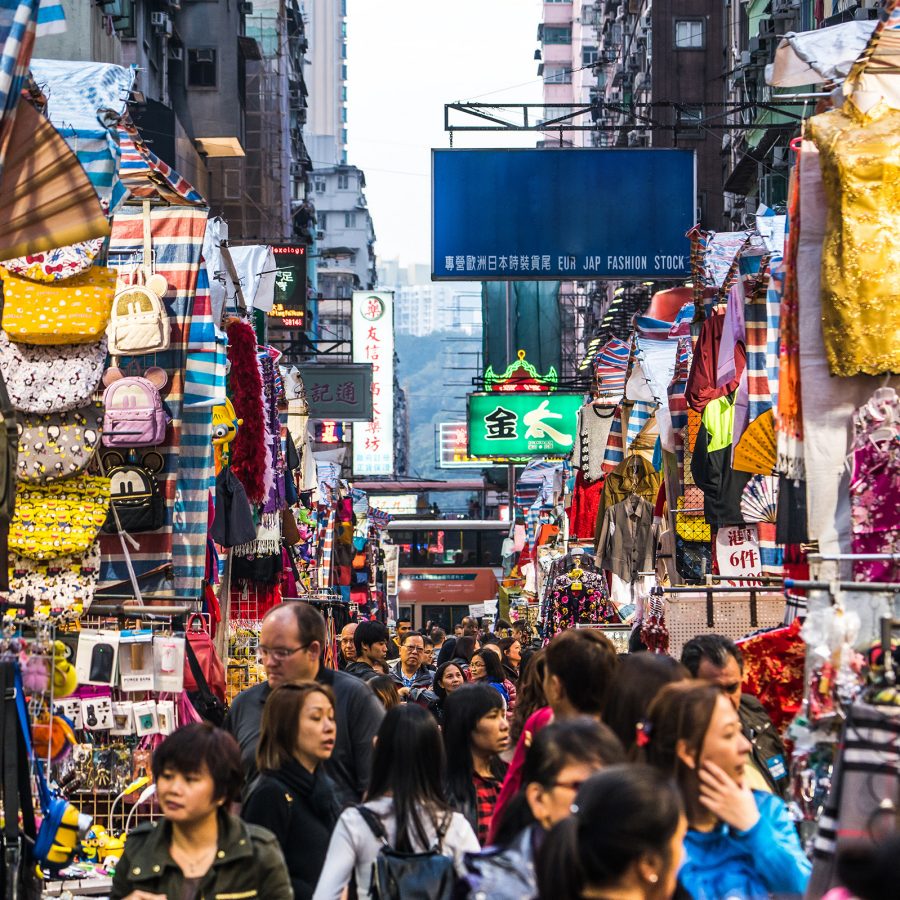
Credit: CHUNYIP WONG/Getty Images
Ladies’ Market
Best for: women’s fashion
Famed for its wide variety of women’s – and men’s – clothes and accessories at bargain prices, Ladies’ Market in Mong Kok takes up a one-kilometre stretch of Tung Choi Street. With over 100 stalls, this bustling Hong Kong market offers far more than its name suggests, featuring everything from mobile phone accessories and football jerseys to art pieces and Hong Kong-themed souvenirs. It’s open daily, except the first day of Chinese New Year.
Tung Choi Street, Mong Kok, Kowloon. Closest MTR station: Mong Kok
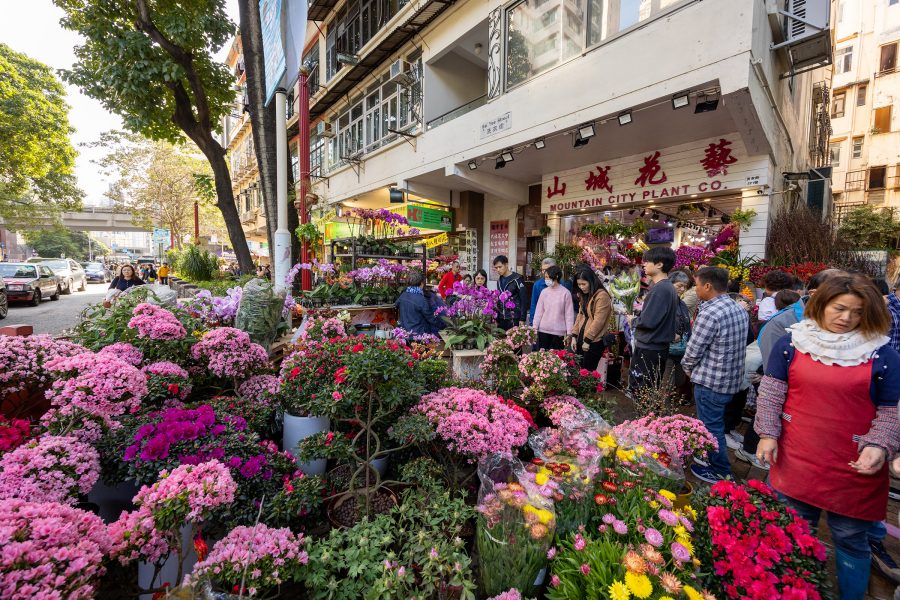
Credit: winhorse/Getty Images
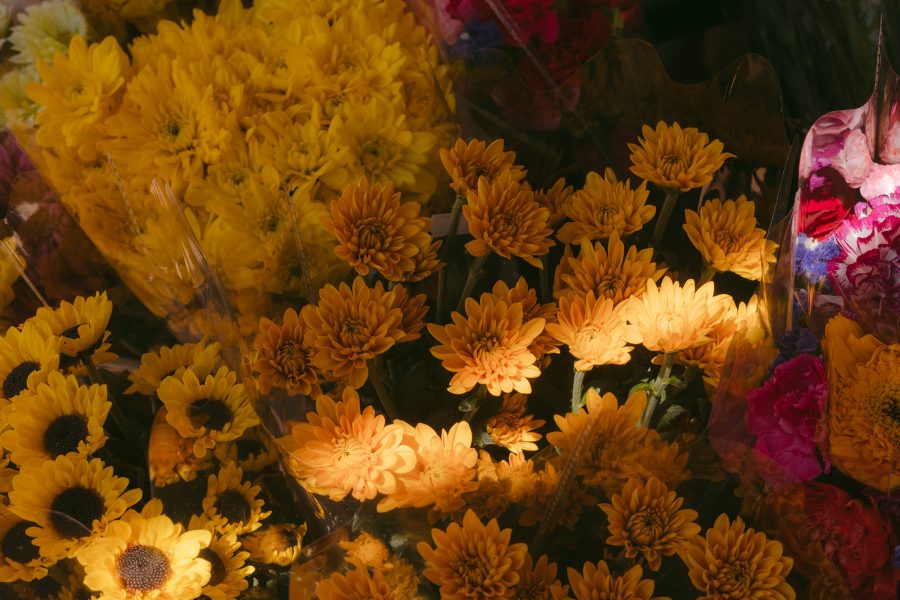
Credit: Elvis Chung
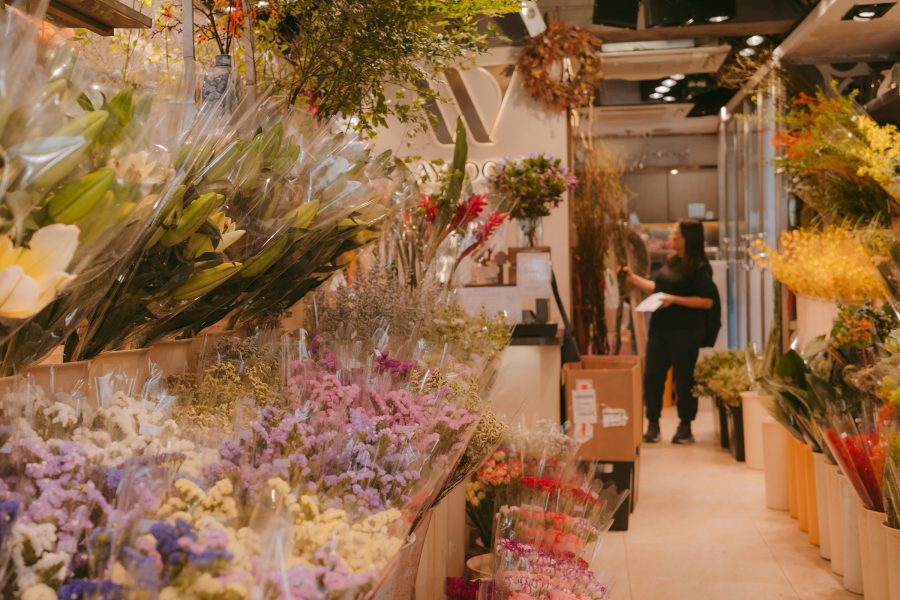
Credit: Elvis Chung
Flower Market
Best for: fresh flowers and plants
Mong Kok’s Flower Market is a natural magnet for those with a green thumb. For many locals, it’s a go-to destination for lush houseplants, vibrant bouquets and seasonal specialities like auspicious blooms for Chinese New Year and Diwali, or evergreen Christmas trees. The market is packed with florists whose stock spills out onto the pavement, transforming the streets into a tapestry of colours. Even if you’re not shopping, take a leisurely stroll through the area and be delighted by the sights and scents of the area.
Flower Market Road, Prince Edward, Kowloon. Closest MTR station: Prince Edward
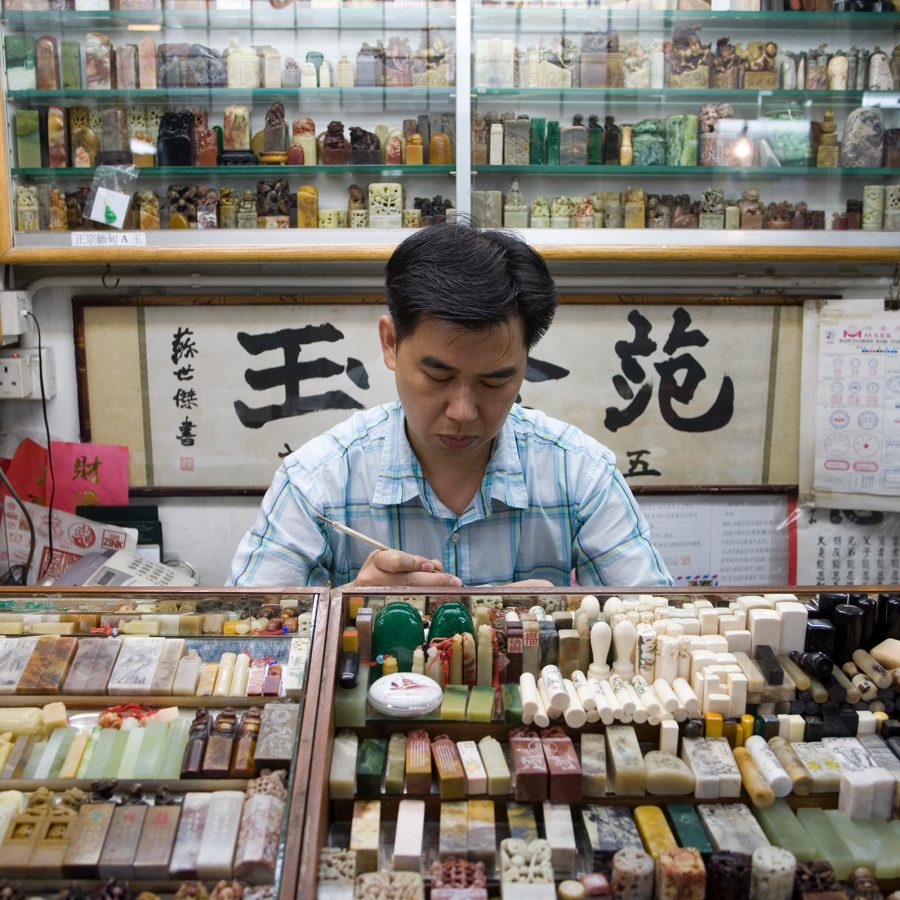
Credit: Lonely Planet/Getty Images
Chop Alley
Best for: personalised stamps and business cards
It might come as a surprise that traditional stationery like stamps – known locally as “chops”— are still big business. Used for centuries to literally seal the deal on official documents, these bespoke, hand-engraved chops are the perfect keepsakes. Seek out these stalls along Chop Alley, commonly known as Man Wa Lane, where chop-makers run their businesses out of classic green-tin stalls. Take your pick of materials, from marble or wood to more practical rubber stamps, and watch the masters at work – some turning orders around in just a few hours.
Man Wa Lane, Sheung Wan, Hong Kong Island. Closest MTR station: Sheung Wan
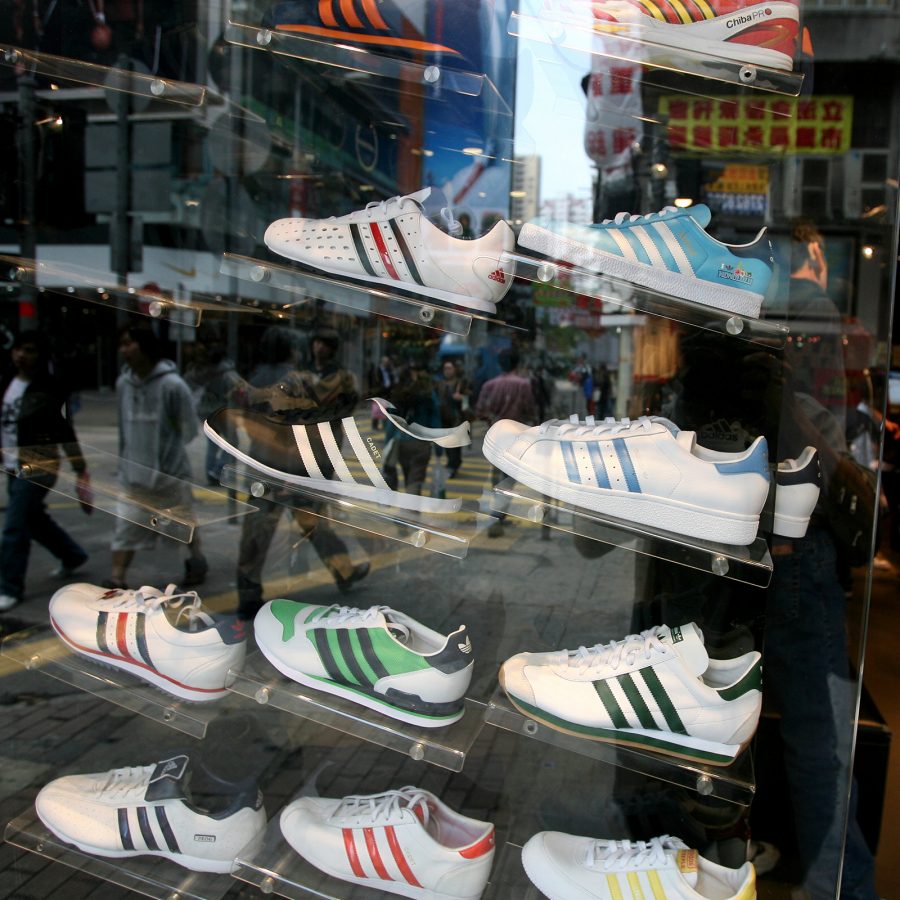
Credit: South China Morning Post/Getty Images
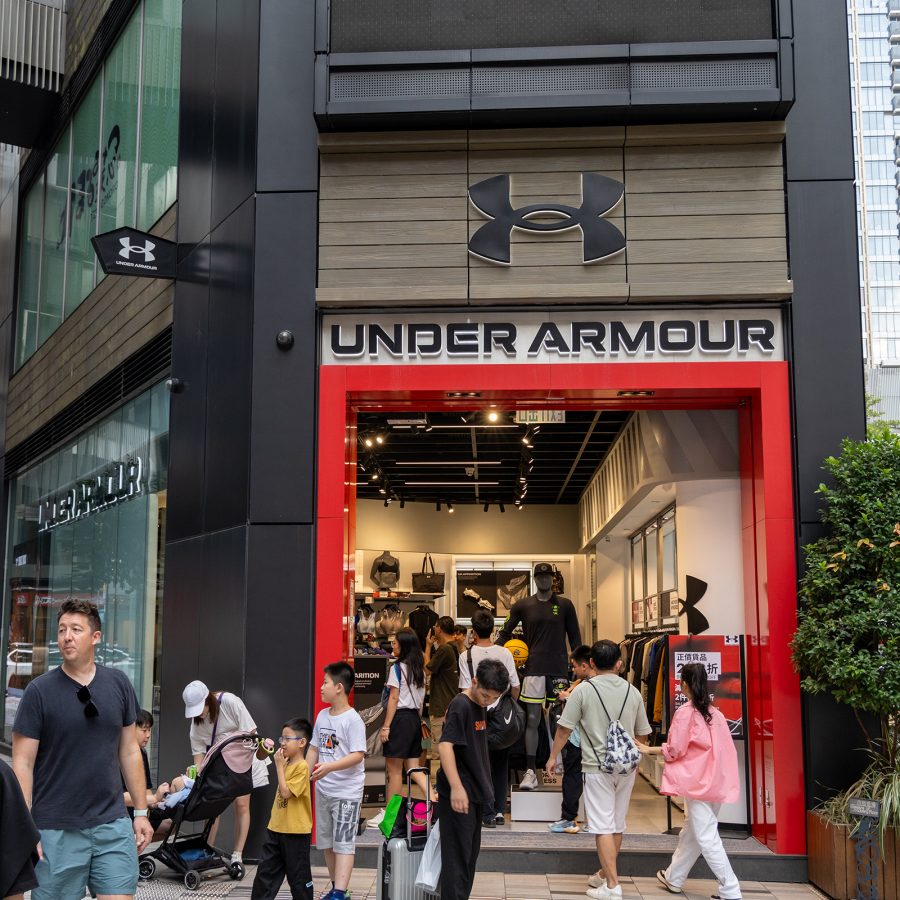
Credit: winhorse/Getty Images
Sneakers Street
Best for: sneakerheads
If you’re on the hunt for fresh kicks or limited-edition sneakers, make a beeline for Fa Yuen Street, better known as Sneakers Street . Just a stone’s throw from the Ladies’ Market, this famed shopping strip is lined with shops that offer the latest footwear from major brands, including rare finds that have sneakerheads lining up around the block. Beyond footwear, you’ll also find several stores selling sports gear and athleisurewear.
Fa Yuen Street, Mong Kong, Kowloon. Closest MTR station: Mong Kok

Credit: UCG/Getty Images
Cat Street
Best for: vintage souvenirs
Better known as Cat Street , Upper Lascar Row in Sheung Wan is a treasure trove where vintage Bruce Lee memorabilia and jade jewellery sit side by side with imperial Chinese furniture. According to urban legend, the tiny street gained its nickname in earlier days when hawkers would sell stolen goods – colloquially called lou syu fo, which means rat goods in Cantonese, while those who bought the items were dubbed cats – thus the name Cat Street. Today, the area is a popular stopover for vintage lovers and antique collectors alike, offering everything from vinyl records to high-end historical pieces.
Hollywood Road and Upper Lascar Road, Sheung Wan, Hong Kong Island. Closest MTR station: Central or Sheung Wan
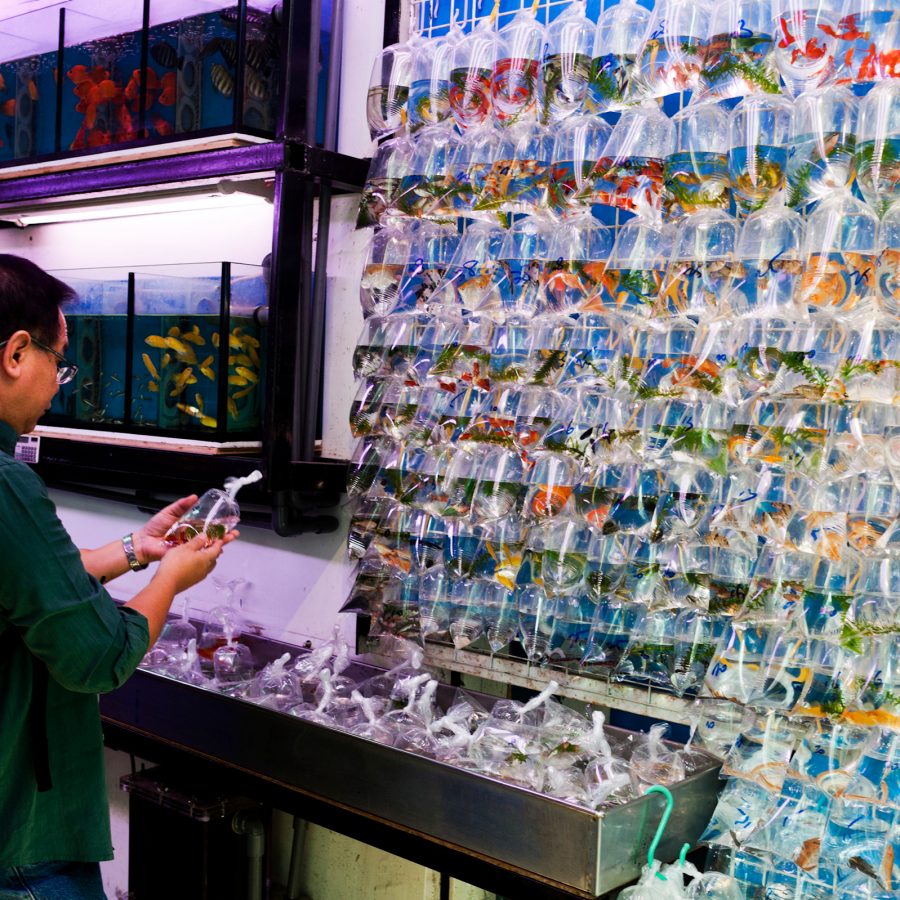
Credit: aluxum/Getty Images
Goldfish Market
Best for: aquarium pets
In Chinese culture, goldfish are believed to bring good fortune – so it’s no surprise that Hong Kong has an entire market dedicated to them. Located on Tung Choi Street, the Goldfish Market features rows of shops selling its shimmering namesake in clear plastic bags, alongside tanks filled with tropical fish and exotic pets like reptiles and amphibians. Tucked into nearby buildings are cosy cat cafés like Cats Tea Room , where you can relax with a drink and mingle with friendly felines – all lovingly adopted or rescued by the owners.
Tung Choi Street North, Mong Kok, Kowloon. Closest MTR stations: Mong Kok or Prince Edward
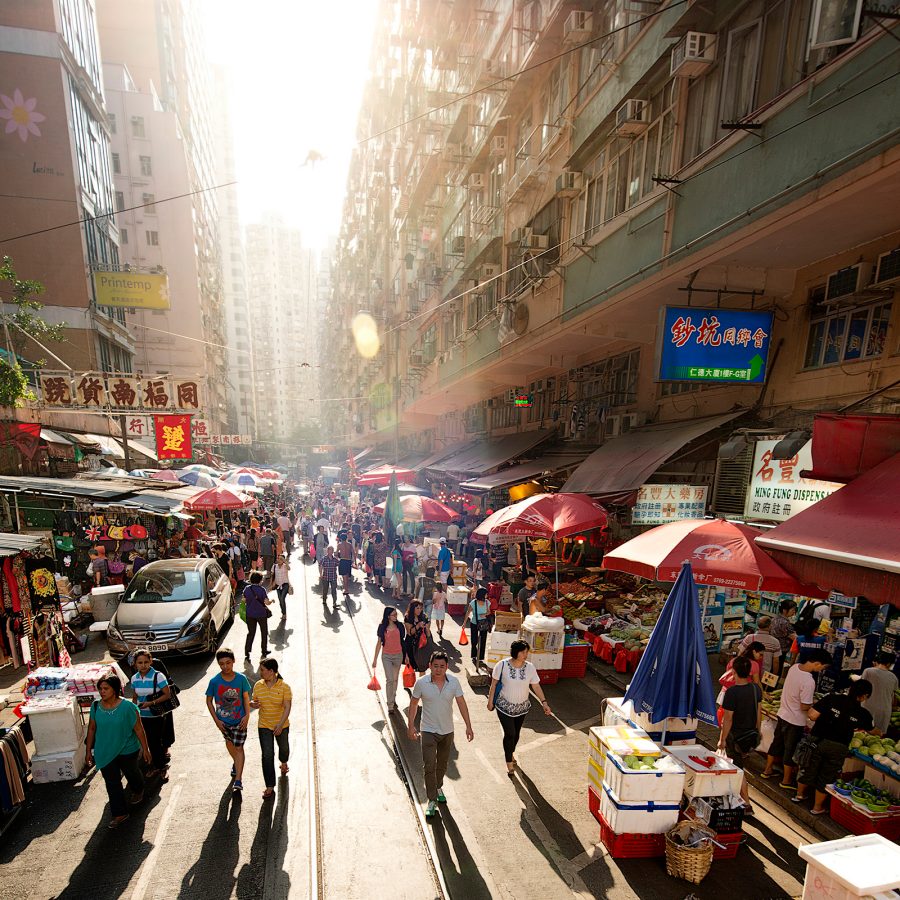
Credit: Andrew TB Tan/Getty Images
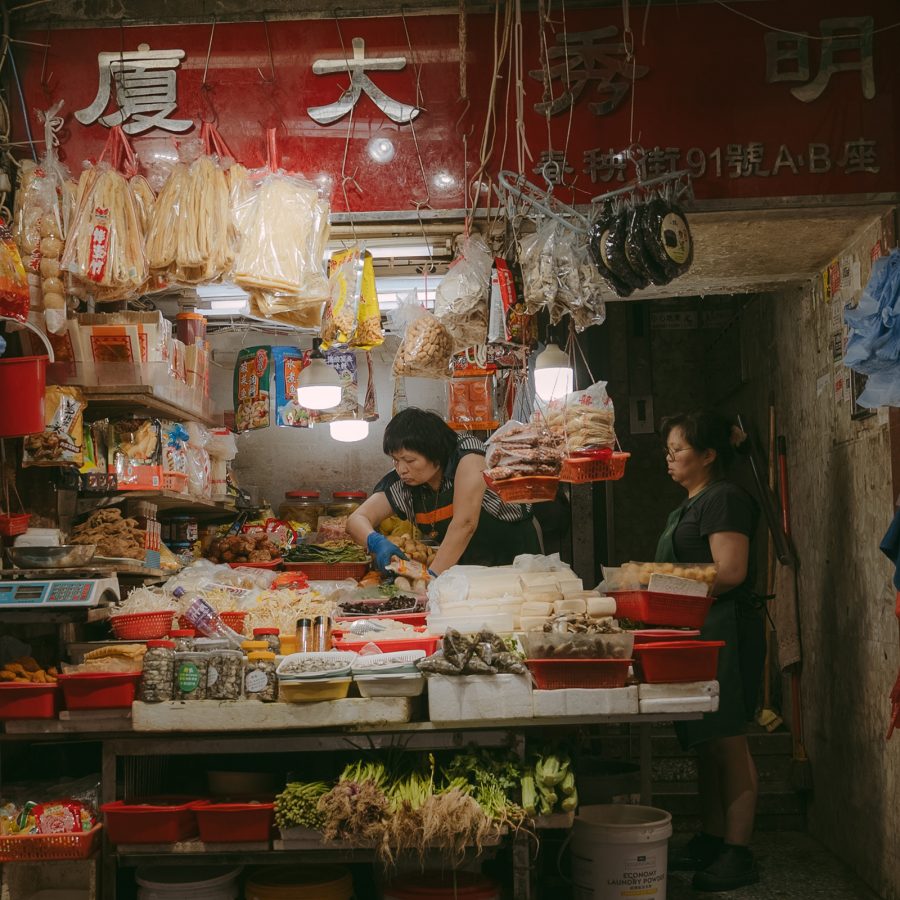
Credit: Elvis Chung
Chun Yeung Street
Best for: fresh produce and meats
North Point is home to a large community of migrants from Shanghai and Fujian, many of whom first settled in the area during the 1960s. Though decades have passed, their cultural imprint remains strong, shaping the neighbourood’s rhythm to this day. Chun Yeung Street is home to a bustling food market – a traditional Chinese wet market at its best – where open-air stalls sell fresh fruits, vegetables and meats. Along nearby Marble Road, the focus shifts to clothing and home products at unbeatable prices.
Chun Yeung Street, North Point, Hong Kong Island. Closest MTR station: North Point
This story was originally published in December 2019 and updated in October 2025.
More inspiration
Hong Kong travel information
- China – the Chinese Mainland, Hong Kong SAR, Macao SAR and Taiwan Region
- Hong Kong SAR - English
- Chinese Mainland (China) - English
- Taiwan, China - English
- 香港特別行政區 - 繁體中文
- 中国內地 - 简体中文
- 中國台灣 - 繁體中文
- Africa
- South Africa - English
- Asia
- Bangladesh - English
- Korea - English
- Singapore - English
- Cambodia - English
- 한국 - 한국어
- Sri Lanka - English
- India - English
- Malaysia - English
- Thailand - English
- Indonesia - English
- Maldives - English
- ประเทศไทย - ภาษาไทย
- Indonesia - Bahasa Indonesia
- Myanmar - English
- Vietnam - English
- Japan - English
- Nepal - English
- Việt Nam - tiếng Việt
- 日本 - 日本語
- Philippines - English
- Australasia
- Australia - English
- New Zealand - English
